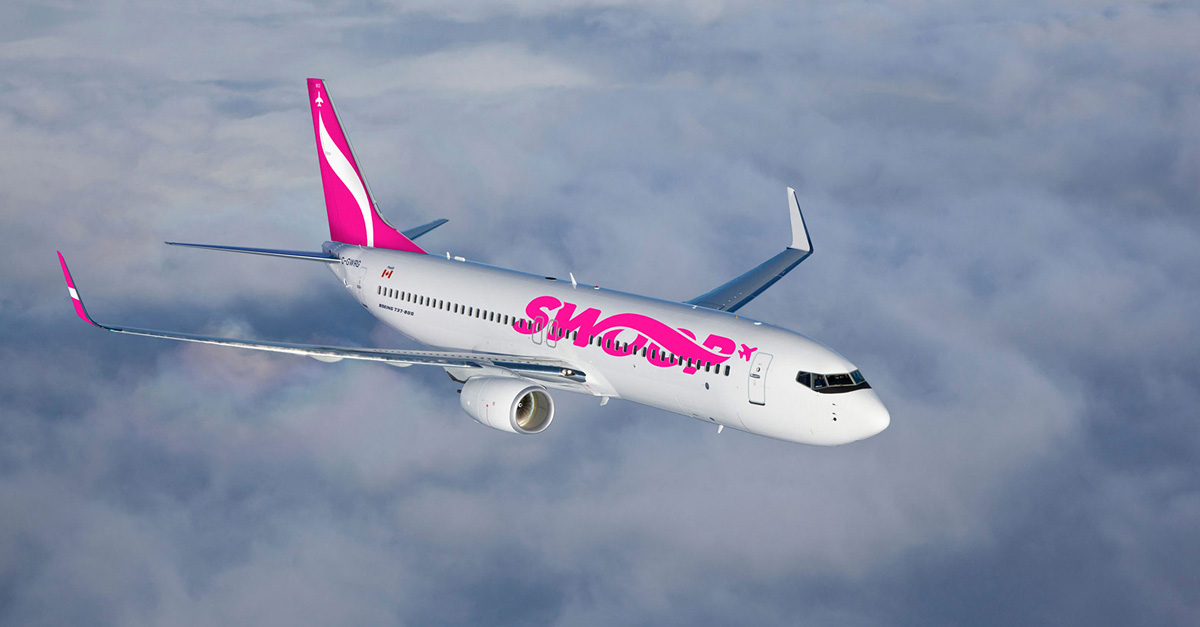
Earlier this month, I was flying around Canada with WestJet and Air Canada, long the only Commercial players in the Canadian domestic market. Now there are finally budget (or “ultra low-cost”) airlines entering the country, with Westjet’s Swoop (like Jetstar to Australia’s Qantas) having commenced flights in June, Jetlines commencing flights next year and Flair Air rapidly expanding with both domestic and US services.
But the majors have long been offering “ultra low-cost” style, no frills fares. Any reasonably priced ticket for Air Canada or WestJet comes without baggage (an additional CAD$31.50 charge applies at check in with both airlines), food or even the ability to choose a seat without an additional charge (WestJet were still charging CAD$22 at check in to change the seat, likely due to my ticket type).
As was once the case in Australia before Virgin Blue entered the market, Canada has long enjoyed an ability to charge what they want due to a lack of competition; with only two airlines providing domestic service, and sometimes only one of the two providing a particular route. But in spite of this, they’ve followed the trends of other airlines around the world to cut services in order to compete with budget airlines. They would argue they were doing it to compete with the budget airlines that were entering the market from the US, which led some passengers to transit via the US just to save money. And indeed, in a city like Toronto, a short drive to Buffalo, New York can save a passenger hundreds on their flight. But it’s terribly inconvenient, adds unnecessary passport checks and hours upon hours of additional travel time. Shouldn’t an airline like Air Canada be doubling down on their potential point of difference? Convenience and the full service experience; a strategy that worked well for Virgin Australia as they shedded the “Virgin Blue” persona. But now, the service is just as average and it still costs considerably more money.
While it’s understandable that airlines need to become more competitive to survive, for the most part, the low cost fares are still more expensive than base fares were before the cheaper options were introduced; they’re not so much reducing the costs for consumers as they are making the standard options more expensive. But even the standard options are without much in flight flair. You may get a refundable ticket or the ability to choose a seat for an extra couple of hundred dollars, but there’s still no in flight food, and baggage is still rarely included. Where’s the airline that provides a meal to all customers? Where baggage is included?
Even on a long haul flight across the country, the WestJet “business class” offering is just the normal seats with a bit of leg room and an empty seat between you and the other business class guest. Sure they get baggage and a bite to eat, but it’s hard to argue it’s worth the extra cost.
But that’s not to say that Air Canada or Westjet are completely devoid of offerings for their customers. Everyone does get a snack and a non-alcoholic beverage. And there is entertainment in flight, usually via your personal device if flying Westjet, or on seatbacks on longer haul Air Canada services. Some flights have wi-fi for an additional charge and seats with USB or even AC power. And service on both airlines, no matter the ticket price, has always been top notch. These are no doubt the things that can and will be cut with the budget alternatives.
Recently flying Ryanair in Europe for the first time, it was interesting to see where they had cut costs: removing in flight magazines; removing seat back holders; and reducing seat quality (words like “thin” and “flimsy” come to mind). These ensure the flight is as lightweight to save on petrol, while something like the lack of a seat back pocket means that cleaning the cabin is as efficient as possible, which in turn allows them to fly quicker and more often. So Ryanair prove that services like Swoop still have plenty they can cut from the Canadian travel experience.
But the European market has full service carriers, with meals and baggage included. Even the US do (namely Southwest or Hawaiian Airlines). And certainly Australia. There are clear alternatives for discerning travellers. Push comes to shove, there’s no full service offering in economy class available within the domestic Canadian network. Jetstar works as an alternative to Qantas because Qantas are a full service carrier; and the same can be said for Tiger to Virgin. So as the ultra low-cost carriers enter the market, shouldn’t the two major players up their service, as Virgin and Qantas have done in the wake of Tiger and Jetstar?
Instead, they seem to be doubling down on the “low cost” ticket options to compete with the budget carriers. And while they see this as a way to increase profits, as the available routes of their competition increases, the long term harm to their brand could see them lose customers. After all, it’s not hard to make the argument “if I’m getting a budget experience anyway, I may as well be saving a bit more and going with the budget carrier”. True competition isn’t just providing an affordable ticket, it’s providing a better service. And if you can’t offer that, what can you offer?
